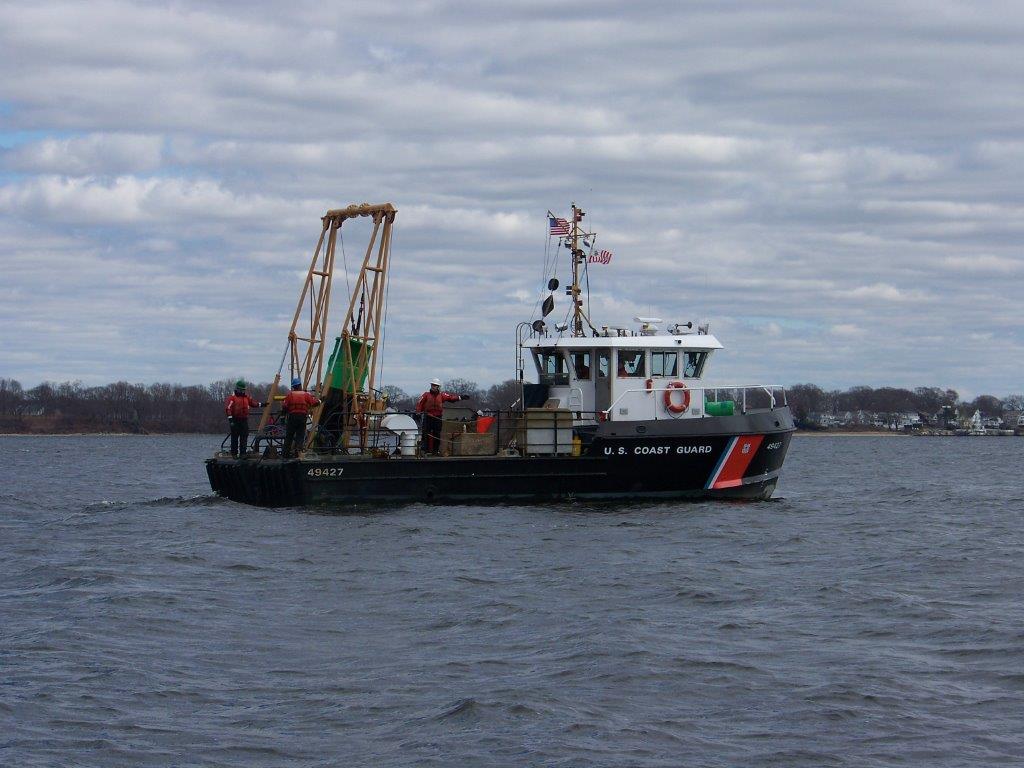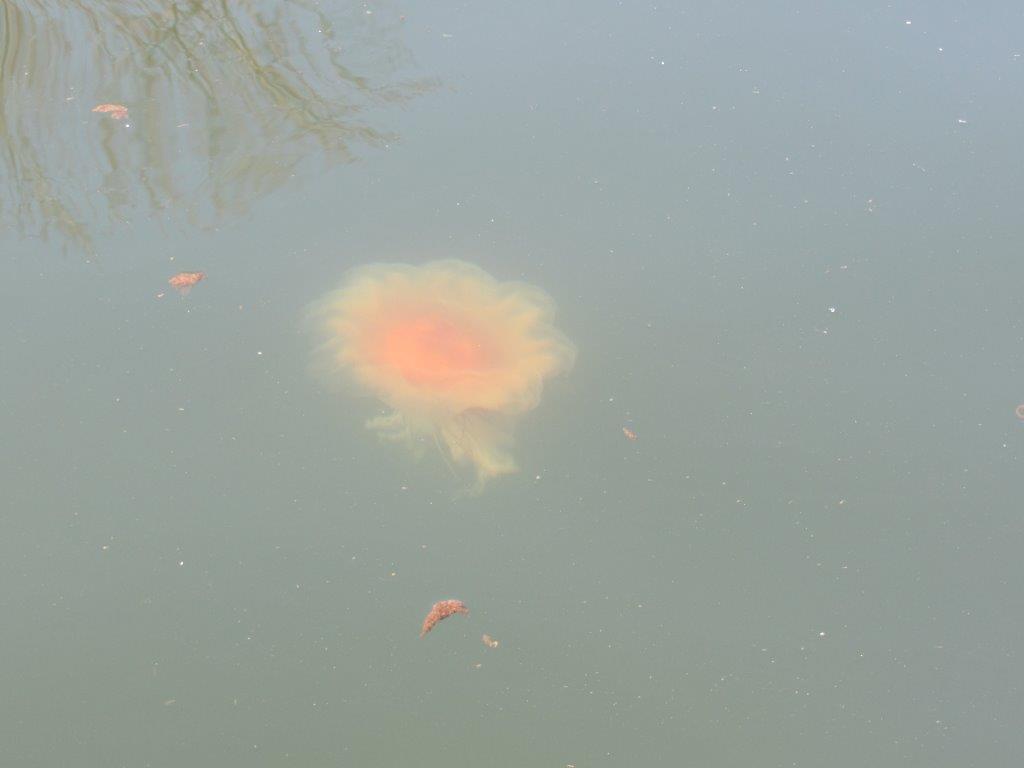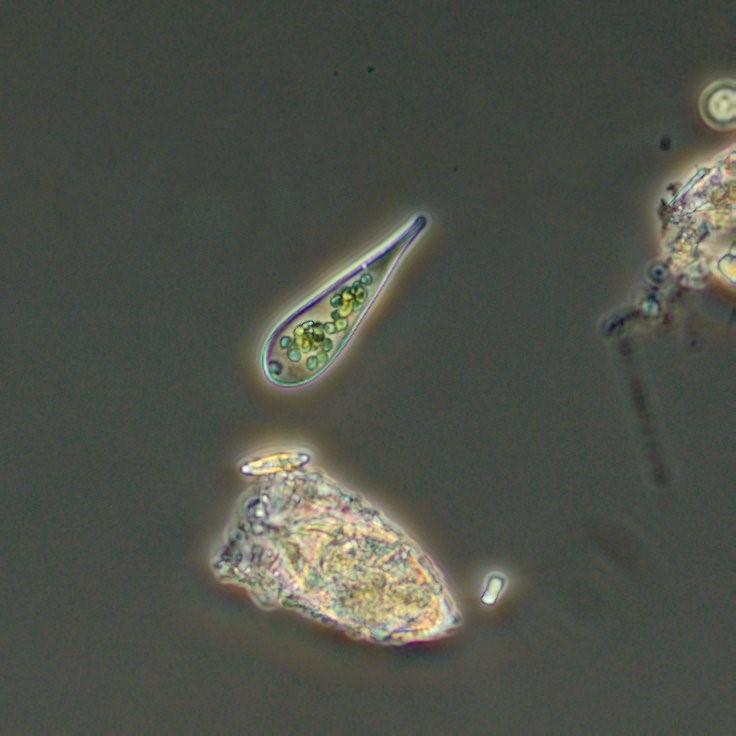Historical News
R/V Monitor's Blog
On Wednesday, April 10th, the crew of the R/V Monitor was out on the upper Bay collecting nutrients and plankton samples, taking Secchi Disk and Par sensor water clarity measurements, and conducting water column profiles using the Seabird instrument, all in an effort to document water quality improvements associated with NBC construction projects. Real-time surface mapping of water quality parameters was not done this day as a result of equipment issues. Jeff captained the boat while monitoring professionals Gerard, Fern and Mike collected the samples and data. It was a partly sunny but cool day with a moderate breeze from the northwest. The water was choppy this day. The photo below was taken at the entrance to Pawtuxet Cove where the US Coast Guard was servicing a buoy that had submerged.

Nutrients Sampling
Seven river stations and one bay station were sampled for nutrients on February 13, 2019. Surface and bottom waters were sampled at the Phillipsdale Landing bay station. In the day prior to sampling, 0.92 inches of rainfall was recorded, while light rainfall occurred the morning of sampling. Among the river stations sampled, highest total nitrogen (TN), total dissolved nitrogen (TDN), and dissolved inorganic nitrogen (DIN) concentrations were measured at the Ten Mile River at Roger Williams Avenue site, with values of 1670 ppb, 1780 ppb, and 1607 ppb, respectively. The Moshassuck River at Higginson Avenue site had the lowest measured TN (670 ppb), TDN (717 ppb), and DIN (585 ppb) values. The Phillipsdale Landing bay site had surface TN, TDN, and DIN concentrations of 1290 ppb, 1230 ppb, and 990 ppb, respectively. Chlorophyll a was 2.14 ug/L at this site.
Results from nutrient sampling completed on February 27, March 13, and March 27 are pending final analysis. The next anticipated date of sampling is April 10, 2019.
Fixed Site Network
Phillipsdale
This week at Phillipsdale, sonde data revealed good water quality. There was about 1.07 inches of rainfall; riverflow from the Blackstone River was about average. Salinity at both the surface and the bottom increased over the course of the week with surface salinity averaging 4.5 psu, with a minimum of 0.6 psu, and a maximum of 16.9 psu. Bottom salinity fluctuated with the tides, and had a weekly average of 10.7 psu and there was a range of 8.7 psu – 12.8 psu. Surface and bottom temperatures remained steady with a slight decrease at the surface; surface temperatures averaged 9.4oC with a range of 6.5oC – 12.4oC and bottom temperatures averged 8.1oC and ranged between 6.1oC – 10.8oC. Dissolved oxygen (DO) for the week was very good at both the surface and the bottom; surface DO had an average of 11.4 mg/L and a range of 10.2 mg/L – 12.8 mg/L. Dissolved oxygen in the bottom waters had a weekly average of 10.7 mg/l and ranged from a minimum of 8.7 mg/L to a maximum of 12.8 mg/L. Chlorophyll was low this week with a weekly average of about 1.5 ug/L at both surface and bottom depths. Note that tidal fluctuations and Blackstone River flow greatly influence bottom DO, temperature and salinity at this location.
Bullock Reach
The buoy and sondes at Bullock Reach are currently out of the water for the season.
R/V Monitor's Blog
On Thursday, April 4th, the crew of the R/V Monitor was out on the upper Bay collecting bacteria samples in an effort to document water quality improvements associated with NBC construction projects. Due to equipment issues real-time surface mapping of water quality parameters was unable to be conducted. In addition, due to very choppy waters, Secchi Disk and Par sensor water clarity measurements and water column profiles were unable to be performed. Sara captained the boat while monitoring professionals Amanda, Mike and Jeff collected the samples. It was a sunny and mild day with a stiff wind out of northwest. The photo below taken last week features one of many jellyfish observed.

Phytoplankton Sampling
On March 27, 2019 phytoplankton samples were collected at Bullock's Reach and analyzed in the laboratory shortly after collection. No Sondes data were available. The plankton tow net sample was filterable with a 20 micron mesh. The filtrate was a tan color with a short filter time. The tow net sample was analyzed qualitatively for microorganisms using 100x phase contrast microscopy. The whole water sample was analyzed quantitatively under 200x phase contrast microscopy. A Hensen Stempel pipette was used to accurately deliver 1ml of sample to a Sedge-wick Rafter chamber. This analysis revealed a total of 2,826,000 cells per Liter. The most predominant phytoplankton was Leptocylindrus spp. at 2,308,000 cells/L. Representative genera include Chaetoceros spp. and Skeletonema spp.
200x phase contrast image of a phytoplanton



